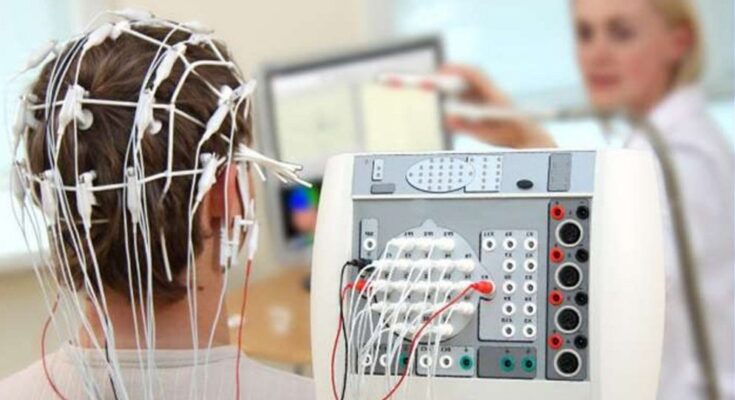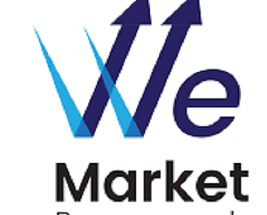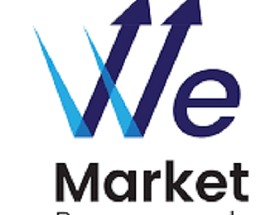Electroencephalography Devices Market Size And Forecast
The global market for electroencephalography devices is growing considerably due to factors such as the rising prevalence of neurological disorders, rising health consciousness among consumers regarding these conditions, and an increase in the adoption of EEG equipment in surgery centres. Additionally, market expansion is being aided by technical developments in the EEG equipment industry and rising R&D spending. The market is comprehensively evaluated in the study on the global electroencephalography devices market. The report provides a thorough analysis of the market’s major segments, trends, drivers, restraints, competitive environment, and other important elements.
Global Electroencephalography Devices Market Definition
An electronic device called an electroencephalograph employs a non-invasive method to track the electrical activity of the brain. The system detects electrical brain impulses with the aid of tiny metal discs (electrodes) attached to the patient’s scalp. Because these electrical impulses are so weak, an amplifier is needed to boost the voltage. The readings from EEG devices are used to monitor sleep disorders and choose the right level of anaesthesia as well as to identify a number of neurological conditions like epilepsy, Parkinson’s disease, and Alzheimer’s disease. Hospitals, diagnostic labs, and neurologist centres among others frequently use EEG equipment.
Global Electroencephalography Devices Market Overview
Due to the rising demand for high-quality EEG devices being used in the diagnosis of various neurological disorders like Alzheimer’s, epilepsy, dementia, multiple sclerosis, Parkinson’s disease, and stroke, the global market for electroencephalography devices is predicted to grow significantly in the coming years. The global market for electroencephalography devices is growing considerably due to the rising prevalence of neurological disorders, rising public awareness of these disorders, and an increase in the use of EEG devices in surgical facilities.
Additionally, market expansion is being aided by technical developments in the EEG equipment industry and rising R&D spending. Additionally, the growth of the healthcare industry, the increase in government initiatives and support in the form of funds and grants for diagnostic equipment, and the rise in the geriatric population around the world all contribute to the development of the electroencephalography devices market.
Additionally, the market players in the Global Electroencephalography Devices Market are anticipated to benefit from expanding patient populations for neurological disorders, rising product development and launch activities, and growth potential in developing countries over the course of the forecast period. However, over the course of the forecast period, it is anticipated that the high setup costs for conventional EEG devices and the scarcity of qualified professionals to accurately administer and operate the device will restrain market development.
The Electroencephalography (EEG) devices market is expected to experience significant growth in the coming years, driven by a variety of factors. Here are some of the key dynamics shaping the EEG devices market:
Increasing Prevalence of Neurological Disorders: The rising incidence of neurological disorders, such as epilepsy, dementia, and Parkinson’s disease, is expected to drive the demand for EEG devices. As the global population ages, the incidence of these conditions is expected to increase, which will further drive market growth.
Cost Concerns: The high cost of EEG devices is expected to remain a challenge for market growth. The cost of EEG devices and associated accessories can be a significant barrier for smaller clinics and hospitals with limited budgets.
The Electroencephalography (EEG) devices market is segmented into several regions, including North America, Europe, Asia-Pacific, Latin America, and the Middle East and Africa. Here is a brief overview of the regional dynamics of the EEG devices market:
North America: North America is the largest market for EEG devices, due to the high incidence of neurological disorders and a well-established healthcare infrastructure. The market is dominated by the United States, which accounts for the majority of the revenue in the region.
Europe: Europe is another important market for EEG devices, with a well-established healthcare infrastructure and a high incidence of neurological disorders. The market is driven by countries such as Germany, France, and the United Kingdom.
Asia-Pacific: The Asia-Pacific region is expected to be the fastest-growing market for EEG devices, due to the increasing prevalence of neurological disorders and the growing healthcare infrastructure in the region. China, Japan, and India are the major markets in the region.
Latin America: The Latin America market for EEG devices is expected to grow at a moderate pace, driven by increasing awareness about the benefits of non-invasive diagnostic procedures and a growing demand for advanced medical technologies.
Middle East and Africa: The Middle East and Africa market for EEG devices is expected to grow at a steady pace, driven by increasing investments in healthcare infrastructure and a growing demand for advanced medical technologies.
The competitive landscape of the Electroencephalography (EEG) devices market is highly fragmented, with several global and regional players competing for market share. The market is characterized by the presence of a large number of established players, as well as new entrants offering innovative products and technologies.
Nihon Kohden Corporation
Medtronic plc
Compumedics Limited
Koninklijke Philips N.V.
Cadwell Industries Inc.
Natus Medical Incorporated
Electrical Geodesics Inc.
NeuroWave Systems Inc.
Advanced Brain Monitoring Inc.
Bio-Signal Group Corp.
Overall, the competitive landscape of the EEG devices market is highly competitive, with several players vying for market share through product innovation, partnerships, and mergers and acquisitions.
The Electroencephalography (EEG) devices market can be segmented based on various factors. Here are some of the common segmentation criteria:
Reasons to Purchase this Report
- Qualitative and quantitative analysis of the market based on segmentation involving both economic as well as non-economic factors
- Provision of market value (USD Billion) data for each segment and sub-segment
- Indicates the region and segment that is expected to witness the fastest growth as well as to dominate the market
- Analysis by geography highlighting the consumption of the product/service in the region as well as indicating the factors that are affecting the market within each region
- Competitive landscape which incorporates the market ranking of the major players, along with new service/product launches, partnerships, business expansions, and acquisitions in the past five years of companies profiled
- Extensive company profiles comprising of company overview, company insights, product benchmarking, and SWOT analysis for the major market players
- The current as well as the future market outlook of the industry with respect to recent developments which involve growth opportunities and drivers as well as challenges and restraints of both emerging as well as developed regions
- Includes in-depth analysis of the market of various perspectives through Porter’s five forces analysis
- Provides insight into the market through Value Chain
- Market dynamics scenario, along with growth opportunities of the market in the years to come
- 6-month post-sales analyst support



